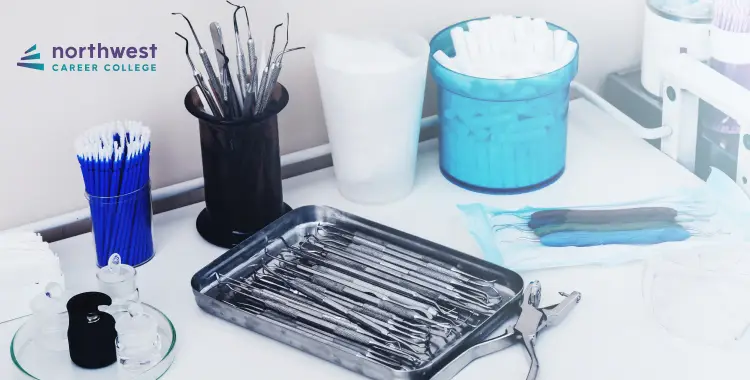A Dental Assistants Guide To Suctioning
- March 11, 2024
- 6.0k views
- 3 min read

One of the primary responsibilities of a dental assistant is to maintaining moisture control during dental procedures. Working inside someone’s mouth means saliva and an excess of saliva can obstruct what the dentist is trying to accomplish.
In this article, we’ll be looking at what different equipment is used for suctioning and what the different techniques are.
Know More: Can a Dental Assistant Use Nitrous Oxide?
Dental Assistants Guide To Suctioning
Oral Evacuation System – Saliva Ejector
The smaller Saliva Ejector is used to keep moisture control during non-invasive dental procedures. The smaller tube of the Saliva Ejector is able to remove excess fluids, but not debris or clotted blood.
Saliva Ejectors are often used during routine procedures such as prophylaxis, placement of sealants, and fluoride treatments.
Oral Evacuation System – High-Volume Evacuators
The bigger brother of the Saliva Ejector, the High-Volume Evacuators is used to remove saliva, blood, debris, and water from the patient’s mouth. The High-Volume Evacuator can also be used to retract the tongue and cheek away from the part of the mouth the dentist is working on.
The High-Volume Evacuator generally has two tips. The operative suction tip is larger and can be used through the mouth. The surgical suction tip is smaller and provides pinpoint moisture control around the area in which the procedure is being performed.
The Air-Water Syringe
The Air-Water Syringe is used to rinse and dry the surgical site. The device itself provides air, water, or a combination of the two through a small sterile tip. The water is used to rinse the site and the pressured air is then used to dry it.

When the dentist is using the mouth mirror to work at the back of the mouth, the Air-Water Syringe can be used to direct a constant flow of air onto the mirror, preventing misting and removing any debris.
The Dental Dam
Made from a thin and stretchy layer of either latex or a silicone latex-free material, the Dental Dam is usually used to separate teeth in order to maintain moisture control. Dental Dams can also be used as an infection control barrier, and to prevent the patient from swallowing any debris.
Because of its flexibility, the dental dam can also be used to essentially cordon off a section of the patient’s mouth, assisting the dentist by retracting the lips, tongue, and gingiva to give greater access to the teeth.
Join One Of The Best Dental Assistant Training Schools In Vegas
Here at Northwest Career College, we firmly believe that learning is a process that continues on the job. Our Dental Assistant Training Course gives you all the critical skills and experience you’ll need to find the best dental assisting employment opportunity in Las Vegas.
Our Dental Assistant School offers morning, afternoon, and night classes to accommodate your busy work and family schedule. Our established seasoned instructors have helped our students achieve a 91% national exam pass rate. Call us at (702) 403-1592 to speak to one of our admissions assistants about your new dental assisting career.



